The recent study that came out showing that ancient people had heart disease, including a group of Alaska Natives whose mummified remains revealed that the perfect paleolithic diet did not protect from heart disease. Funny thing, Alaska Natives have known this for years. While some may want to say our diet is the ultimate, we have known it is just our way to survive - to live. St. Paul is a small community of several hundred in the Pribilloff Islands. A remnant of the ancient people of Alaska, with only minimal changes from our paleolithic era.
Most people would never know about these islands were it not for the TV series, Most Dangerous Catch. It is these islands that the crab fisherman come to process some of their crab. Viewers of the show will recognize the name of the place.
- In the distance is St. George, the smaller of the two islands. St. Paul is 7 miles wide, 14 miles long. Formed from volcanic activity.
Lonely islands, in the middle of the Bering Sea - but home to some of the most ancient people on earth. St Paul is a three hour flight from Anchorage. Sometimes the weather is so fierce that people have been unable to leave the island for several days.
Like their ancestors, these Alaska natives get their food from fishing. Halibut, crab, salmon, char, and the occasional seal. The only thing that has been introduced into their diet has been the reindeer herd on the island - that would provide a bit of our dinner that night. While there is a single grocery store, products from the lower-48 are expensive and not often used.
The recent Lancet article stated:
The presence of atherosclerosis in premodern human beings suggests that the disease is an inherent component of human ageing and not characteristic of any specific diet or lifestyle.
- The Aleuts, or Unangan, peoples inhabit the western most part of Alaska - purple. The two little spots above the t in Alutiiq is where St. Paul Island is-
In the article they had studied mummified remains of Alaska Natives, my ancestors. The Aleuts live on the islands in the western part of Alaska. These islands, formed from mostly volcanic formation, to this day are rich in marine life, with abundant fish, seal, whales, and occasional berries.
I was last there when invited to a celebration in St. Paul because of their new clinic. A beautiful facility, staffed by physicians out of Anchorage. But this facility is vital to the community.
- The island is a natural breeding ground for seals, who migrate here yearly. The Russians forced Aleuts to inhabit the island to harvest the seals
The island was originally uninhabited until the Russians arrived. Used primarily as a hunting area for natives, then the Russians discovered the great seal population they forcibly moved hundreds of Aleuts here to harvest the fur. Those families still remain.
Why, you might ask, should you think about Aleuts? Why do food scientists think about them? These were/are one of the great hunter-gathering societies, eating a diet of fish, meat - even getting their vitamin C, not from citrus, but from marine life. Those relatives, my ancestors, had a diet rich in omega-3 fatty acids, did not eat processed grains - in fact, they rarely had any food but what would be the ideal paleo-rich, non-processed, occasional berry (in season - fresh and local) diet.
For the study in Lancet, it was made possible to see what my ancestors ate because the climate in these parts allows mother nature to mummify the body, making the bodies available to study.
- Main Street in St. Paul. They have one bar, one post office, one grocery store, and one church
This group was use to physical activity, without animals to transport them they relied on the kayak for whaling, fishing, and transportation to visit one another on other islands. With Russians reporting that some of these peoples would go hundreds of miles in Kayaks.
- Restoring an ancient Kayaks. Much larger than the individual ones used for modern sport
- A better view of how large these ocean going vehicles were
It has been postulated that the Eskimo (the Aleut are the same group as the Eskimo) would have the lowest incidence of coronary artery disease because of their diet. The hunter-gathering society had a "reported" low incidence - although as with many population studies have shown, you often find it when you look for it. For a more in depth discussion about population studies and how we have missed them see here. The Pima Indians, of Arizona, are called "the most studied group" in the world. It was once assumed they had no heart disease, and thus began an intensive study as to why they didn't have heart disease- but as more studies were performed, turns out the Pimas, like many societies, have heart disease. In fact more of it than western societies. It is the same with the Eskimo health, whether from Greenland or other areas, when critically examined, this society has the same rate of heart disease as others.
Modern Man:
Some have speculated that the incidence of coronary artery disease among Eskimos is because of their interaction with modern man. The introduction of grains into their diets, tobacco, and machinery with less exercise. Not only did the study in Lancet article show that cardiac disease was present in those paleo-people, it is in line with laboratory studies of Aleuts showing they have the same markers for cardiac disease as the rest of us.
Smoking:
- This is a modern representation of homes of the Aleuts. This from The Alaska Native Heritage Center in Anchorage, Alaska. A worthwhile place
While they did not have tobacco, all ancient peoples used fire. The Native Alaskas of the Aleutians had homes built partially underground, and used community fires with smoke going out of a hole in the roof, or used fires to heat water that would heat the homes. This might have lead to increased exposure that would accelerate heart disease, but the dispersion of smoke from this would be hundreds of times less than exposure from those who inhale tobacco.
Seal oil was used for lamps. Which, like olive oil, burns quite brightly.
Today they use electricity. So the second-hand smoke from fires and lamps is no longer a factor. They still eat a diet primarily of fish. Still, as we found from this little clinic for a town of 400 people, there is heart disease. Several times a year a person is evacuated out of this town to the city of Anchorage for advanced cardiac care.
One of the mummified remains of an Aleut lady showed severe artery disease to the extent that if we saw this today she would undergo vascular surgery. This in a woman who was in her late 40's to early 50's. She may very well have died of a stroke.
- The people still get eggs, but they prefer the fresh ones from the cliff. Higher in omega-3 fatty acids than the ones from the chicken farms. These islands have some of the most unique birds in the world.
In fact, in the recent study published on-line by Lancet, they discovered atherosclerosis was prevalent in all areas of the world, over a 4000 year time span, and several continents, with peoples having ancient diets from rich in saturated fat, to near vegetarian, to pure paleo.
Exercise:
Exercise you say? Turns out that in ancient cultures, without the benefit of cars, bikes, or probably even animals- physical activity was normal- and lean and mean were simply natural. Like a six-pack, probably every ancient Alaska Native person had one-- but in their coronary arteries were plaques, that would make any modern, beer belly, sedentary modern human proud.
Heart Disease:
The study showed that heart disease was found throughout ancient civilization. It wasn't the diet that prevented it. In fact, probably was genetic like most of us thought all along. Like their ancestors before, the Aleuts of St. Paul have the same disease, virtually the same diet. Their lifestyle is better now, with indoor heat, better insulation. They still live a physical life. But one thing they need- much like many - is some statin drug like Lipitor which works much better than their ancient diet, or any diet you can think of .
Ask an Alaska Native if their diet protected them from disease: they will tell you, it didn't. Food wasn't meant for medicine, food was meant to nourish the body. A lesson the ancient people knew - one that many doctors are still learning.
REFERENCES:
Atherosclerosis across 4000 years of human history: the Horus study of four ancient populations.Randall C Thompson, Adel H Allam, Guido P Lombardi, et.al.  www.thelancet.com Published online March 10, 2013
www.thelancet.com Published online March 10, 2013
 www.thelancet.com Published online March 10, 2013
www.thelancet.com Published online March 10, 2013
High prevalence of markers of coronary heart disease among Greenland Inuit. Jørgensen ME, Bjerregaard P, Kjaergaard JJ, Borch-Johnsen K.Atherosclerosis. 2008 Feb;196(2):772-8 PMID: 17306273
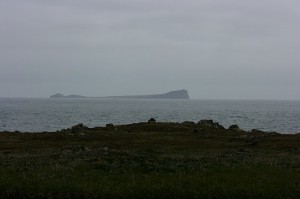
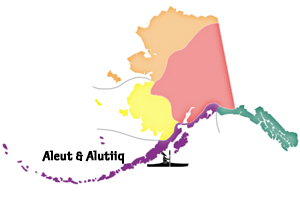
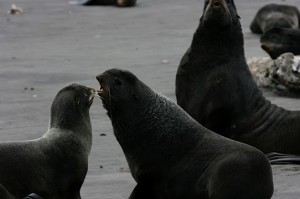
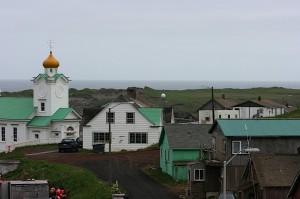

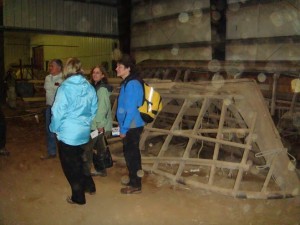


No comments:
Post a Comment